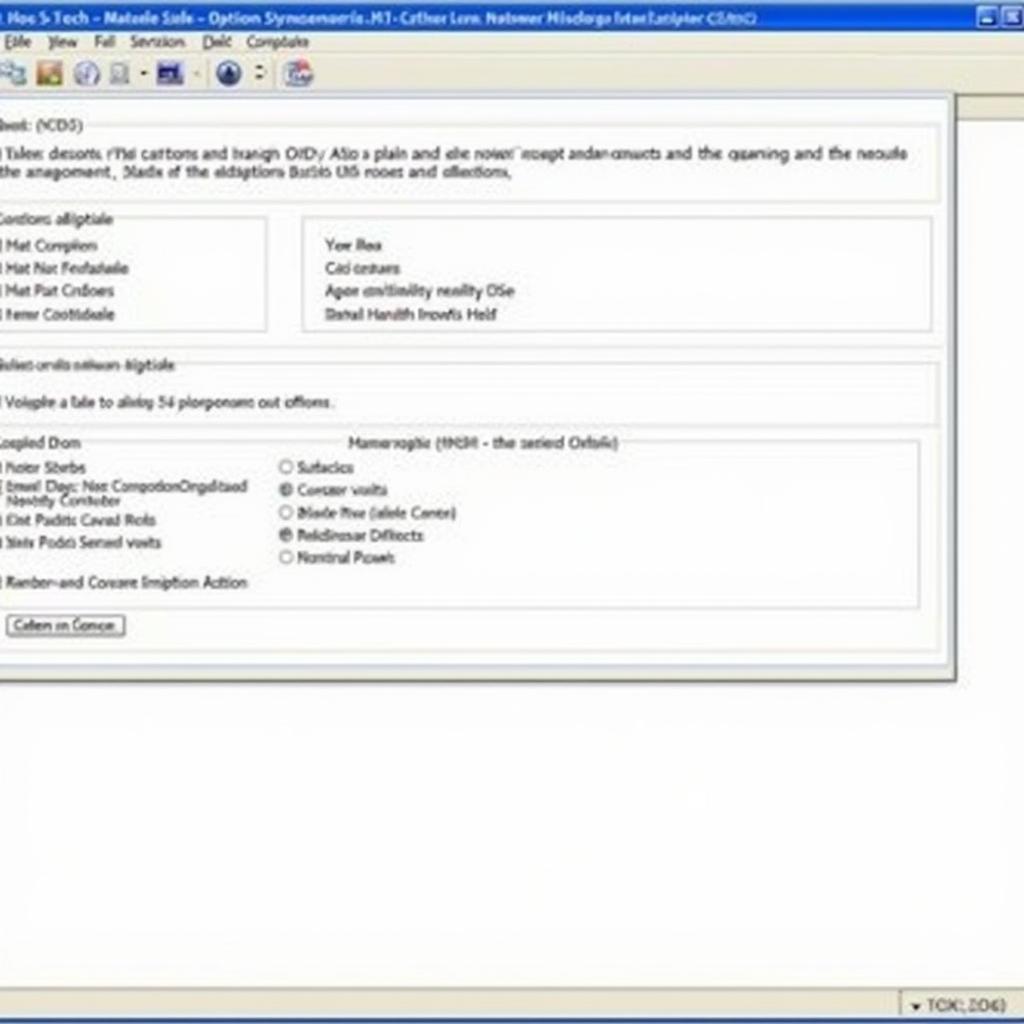Your cart is currently empty!

Mastering Ross-Tech DSG Adaptation: A Comprehensive Guide
Ross-Tech DSG adaptation is a crucial procedure for maintaining the smooth and efficient operation of your Direct-Shift Gearbox (DSG). Whether you’re experiencing rough shifting, slippage, or simply want to optimize your DSG’s performance, understanding this process is essential. This comprehensive guide will delve into the intricacies of Ross-Tech DSG adaptation, equipping you with the knowledge to troubleshoot and enhance your driving experience.
What is Ross-Tech DSG Adaptation?
DSG transmissions are known for their lightning-fast gear changes and improved fuel efficiency compared to traditional automatic transmissions. To achieve this seamless performance, the DSG relies on complex mechatronics and software that require precise calibration. This calibration process, known as adaptation, is where Ross-Tech comes in.
Ross-Tech, renowned for its powerful diagnostic and programming software VCDS (VAG-COM Diagnostic System), offers the tools and interface necessary to perform DSG adaptation. This procedure involves adjusting various parameters within the DSG’s control module, ensuring optimal clutch engagement, shift points, and overall transmission behavior.
Why is Ross-Tech DSG Adaptation Important?
Over time, factors like wear and tear, software updates, or component replacement can affect your DSG’s adaptation values. When these values deviate from their optimal settings, you might encounter various drivability issues, including:
- Rough Shifting: Jerky or hesitant gear changes, particularly during acceleration or deceleration.
- Slipping Gears: The sensation of the transmission momentarily disengaging between gears.
- Delayed Engagement: A noticeable lag between shifting into gear and the vehicle responding.
- Increased Clutch Wear: Improper adaptation can lead to premature wear of the DSG’s clutch packs.
Performing a Ross-Tech DSG adaptation helps to:
- Restore Smooth Shifting: Recalibrating adaptation values ensures seamless gear changes for a more refined driving experience.
- Optimize Clutch Performance: Fine-tuning clutch engagement points maximizes friction and prevents slippage.
- Improve Fuel Economy: Proper adaptation can contribute to better fuel efficiency by optimizing shift timings.
- Extend Transmission Lifespan: Maintaining accurate adaptation values helps prevent unnecessary wear and tear on DSG components.
 Ross-Tech DSG Adaptation Software
Ross-Tech DSG Adaptation Software
When Should I Perform a Ross-Tech DSG Adaptation?
It’s generally recommended to perform a Ross-Tech DSG adaptation in the following situations:
- After Software Updates: Whenever your vehicle undergoes a software update that affects the transmission control module (TCM).
- Replacing DSG Components: Following the replacement of components like the clutch, mechatronics unit, or transmission fluid.
- Experiencing Drivability Issues: If you’re encountering any of the aforementioned DSG-related problems.
- Preventative Maintenance: Periodically adapting the DSG, even without noticeable issues, can help maintain optimal performance and longevity.
How to Perform a Ross-Tech DSG Adaptation
Performing a Ross-Tech DSG adaptation requires a VCDS interface cable and the compatible software installed on a Windows-based laptop. Here’s a step-by-step guide:
Note: This is a general overview. Always refer to the specific adaptation procedures outlined in your vehicle’s factory repair manual or consult with a qualified technician for guidance.
-
Connect and Prepare:
- Connect the VCDS interface cable to your vehicle’s OBD-II port and your laptop.
- Turn the ignition on but do not start the engine.
- Launch the VCDS software and establish communication with your vehicle.
-
Access the Transmission Module:
- Select “Select Control Module.”
- Choose “Automatic Transmission” or “DSG” from the list of modules.
-
Initiate Basic Settings:
- Go to “Basic Settings.”
- Depending on your specific DSG model, you’ll find adaptation options like “Clutch Adaptation,” “Gear Change Adaptation,” or similar procedures.
-
Follow On-Screen Instructions:
- Carefully follow the on-screen prompts provided by the VCDS software. These instructions will guide you through the specific steps for each adaptation procedure.
- Pay close attention to any prerequisites, such as engine temperature or gear selector position, that need to be met.
-
Complete the Adaptation:
- Once the adaptation procedure is complete, the VCDS software will indicate its success.
- Clear any fault codes stored in the transmission module.
Tips for Successful Ross-Tech DSG Adaptation:
- Battery Support: Ensure your vehicle’s battery is fully charged or use a battery charger to maintain voltage stability during the adaptation process.
- Distraction-Free Environment: Perform the adaptation in a quiet environment with minimal distractions to ensure accurate results.
- Consult Factory Repair Information: Always refer to your vehicle’s factory repair manual for specific adaptation procedures and recommended values.
- Seek Professional Assistance: If you’re unsure about any aspect of the adaptation process, it’s always best to consult with a qualified technician experienced in working with DSG transmissions and Ross-Tech equipment.
Conclusion
Ross-Tech DSG adaptation is a valuable procedure for maintaining and enhancing the performance of your Direct-Shift Gearbox. By understanding the importance of adaptation and following the proper steps, you can ensure smooth shifting, optimize clutch performance, and potentially extend the lifespan of your DSG transmission.
Remember, if you’re ever unsure about performing this procedure yourself, don’t hesitate to contact a qualified technician for assistance. For expert guidance and support, reach out to us at VCDs Tool at +1 (641) 206-8880 and our email address: vcdstool@gmail.com or visit our office at 6719 W 70th Ave, Arvada, CO 80003, USA.
by
Tags:
Leave a Reply